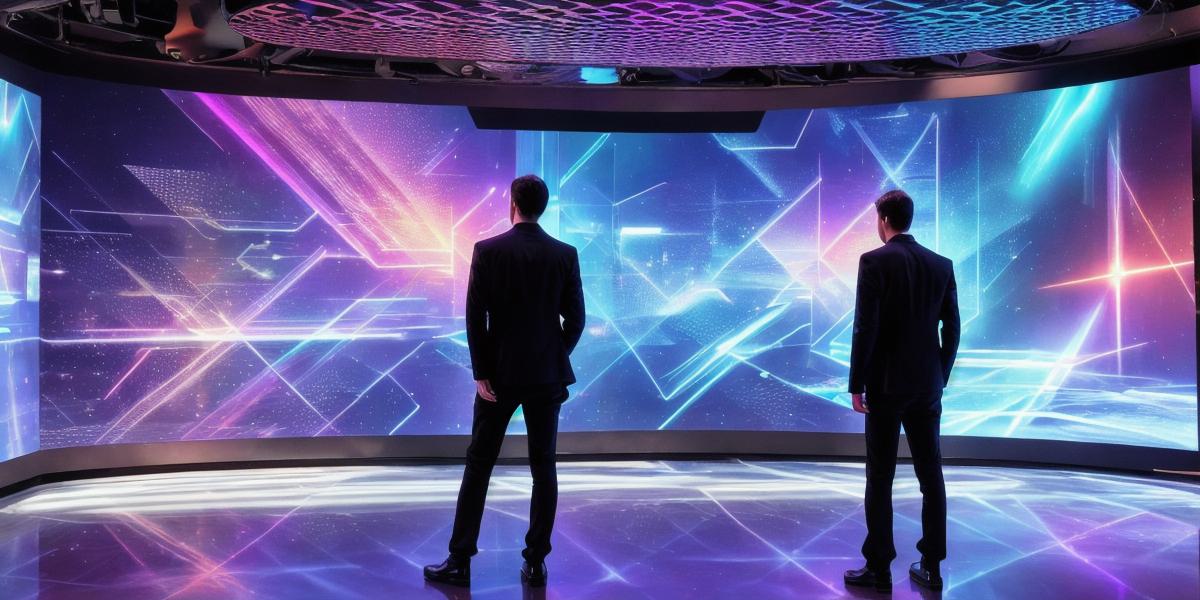In recent years, we have seen an explosion of innovation in the field of virtual reality and augmented reality. These technologies have opened up new possibilities for immersing ourselves in digital worlds and experiencing things that we may never be able to do in real life. But what if we could take these concepts one step further? What if we could create a reality so advanced, it was indistinguishable from the real world? This is where simulation reality comes into play.
Simulation reality refers to a world that is created and maintained using advanced algorithms and computer simulations. In this world, everything appears to be real, but in fact, it is just a carefully constructed digital environment. While this technology is still largely theoretical at this point, there are some fascinating case studies that illustrate its potential.
One of the most well-known examples of simulation reality is the "simulated reality" experiment conducted by Stanford University in 2015. In this study, researchers placed participants into a virtual environment that was designed to mimic a real-life classroom. The participants were then asked to complete a series of tasks and interactions with each other, all while being unaware that they were actually in a simulated reality.
The results of the experiment were fascinating. Participants reported feeling as though they were truly in a classroom, and their behavior was consistent with what we would expect from a real-life scenario. This raises important questions about the nature of reality and how our perception is shaped by the world around us.
Another example of simulation reality can be found in the field of artificial intelligence. With the advent of machine learning and deep learning, AI systems are becoming increasingly sophisticated and capable of learning from their environment. As these systems become more advanced, they may be able to create simulated realities that are indistinguishable from the real world.
This raises important ethical questions about the role of AI in shaping our perception of reality. If AI systems are able to create simulated realities, how can we be sure that these simulations are not being used to manipulate or deceive us? And what if these simulations become so advanced that they blur the line between what is real and what is not?
While simulation reality is still largely theoretical at this point, there are some exciting developments on the horizon. For example, researchers at MIT have developed a system called "Cogito" that uses AI to create highly realistic virtual environments. This technology has the potential to revolutionize fields such as medicine and education by providing immersive experiences that can be used to train professionals or teach complex concepts.
As we continue to explore the possibilities of simulation reality, it is important to consider both its benefits and its risks. While this technology has the potential to transform our understanding of reality, it also raises important questions about ethics, privacy, and the role of technology in shaping our perception of the world.
FAQs
- What is simulation reality?
Simulation reality refers to a world that is created and maintained using advanced algorithms and computer simulations. Everything in this world appears to be real, but it is actually just a carefully constructed digital environment. - What are some examples of simulation reality?
Some examples of simulation reality include the "simulated reality" experiment conducted by Stanford University, as well as AI systems that are capable of creating highly realistic virtual environments. - What are the benefits of simulation reality?
Simulation reality has the potential to revolutionize fields such as medicine and education by providing immersive experiences that can be used to train professionals or teach complex concepts. - What are the risks of simulation reality?
There are important ethical questions about the role of AI in shaping our perception of reality, as well as concerns about privacy and the potential for manipulation or deception. - How can we ensure that simulation reality is used ethically?
It is important to carefully consider the potential benefits and risks of simulation reality, and to develop guidelines and regulations that ensure that this technology is used in an ethical and responsible manner.
